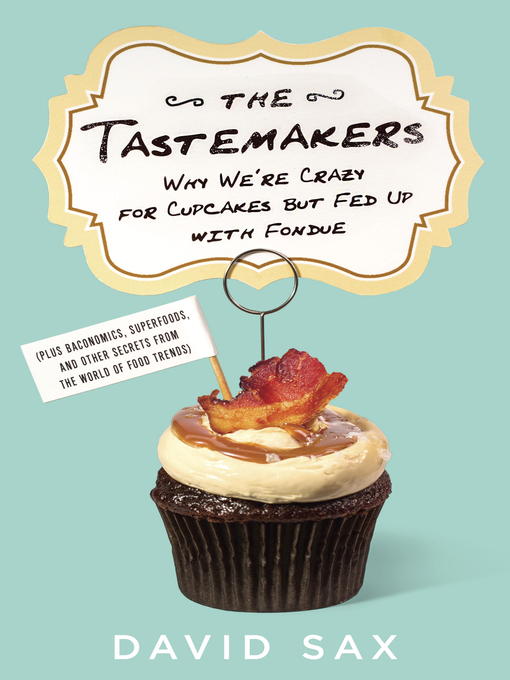Tastemaker, n. Anyone with the power to make you eat quinoa.
Kale. Spicy sriracha sauce. Honeycrisp apples. Cupcakes. These days, it seems we are constantly discovering a new food that will make us healthier, happier, or even somehow cooler. Chia seeds, after a brief life as a novelty houseplant and I Love the ’80s punchline, are suddenly a superfood. Not long ago, that same distinction was held by pomegranate seeds, açai berries, and the fermented drink known as kombucha. So what happened? Did these foods suddenly cease to be healthy a few years ago? And by the way, what exactly is a “superfood” again?
In this eye-opening, witty work of reportage, David Sax uncovers the world of food trends: Where they come from, how they grow, and where they end up. Traveling from the South Carolina rice plot of America’s premier grain guru to Chicago’s gluttonous Baconfest, Sax reveals a world of influence, money, and activism that helps decide what goes on your plate. On his journey, he meets entrepreneurs, chefs, and even data analysts who have made food trends a mission and a business. The Tastemakers is full of entertaining stories and surprising truths about what we eat, how we eat it, and why.
- Available now
- New eBook additions
- Superloan eBooks
- New teen additions
- New kids additions
- Captivating Lives on eBook
- Readers for Adult Learners
- See all ebooks collections
- Available now
- Superloan eAudiobooks
- New audiobook additions
- New kids additions
- New teen additions
- Captivating Lives on Audio
- See all audiobooks collections

